To help us provide you with free impartial advice, we may earn a commission if you buy through links on our site. Learn more
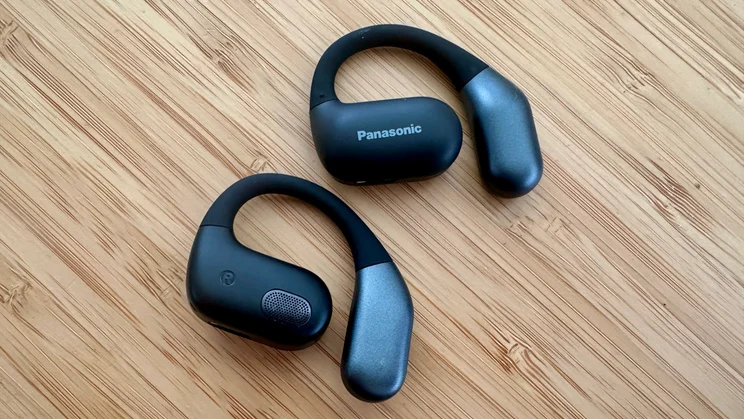
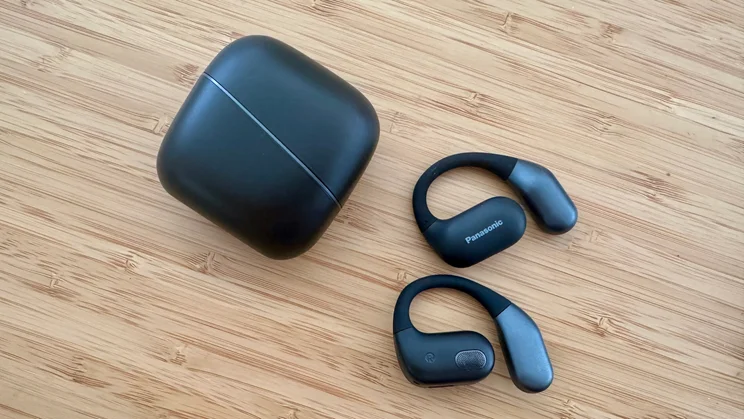
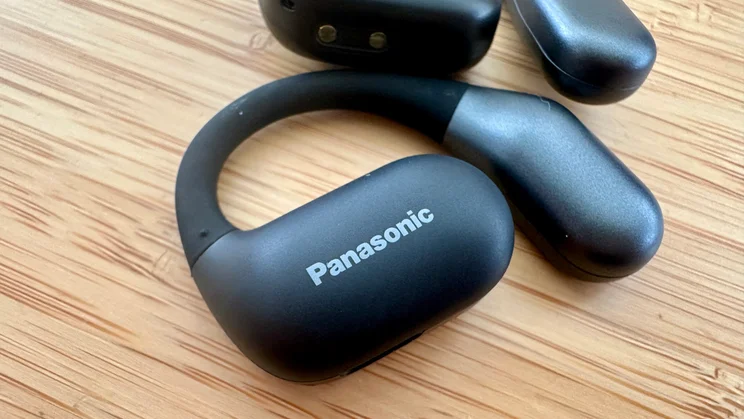
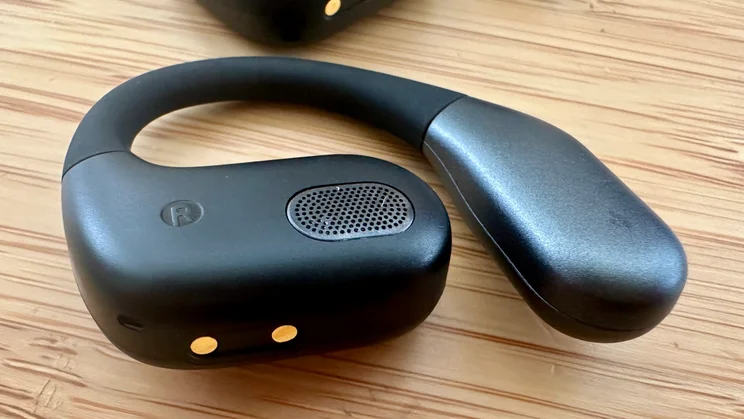
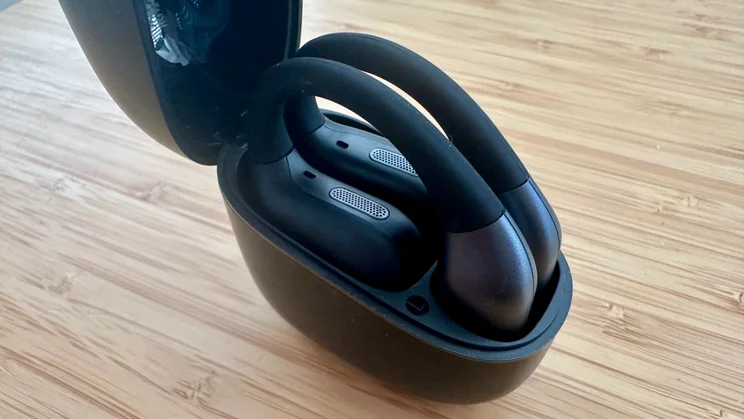
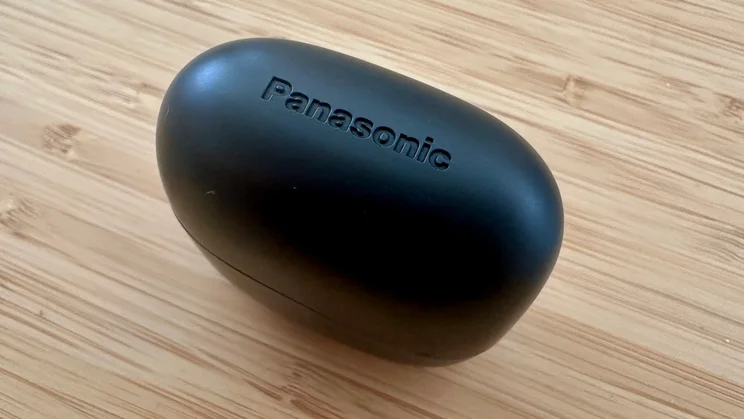
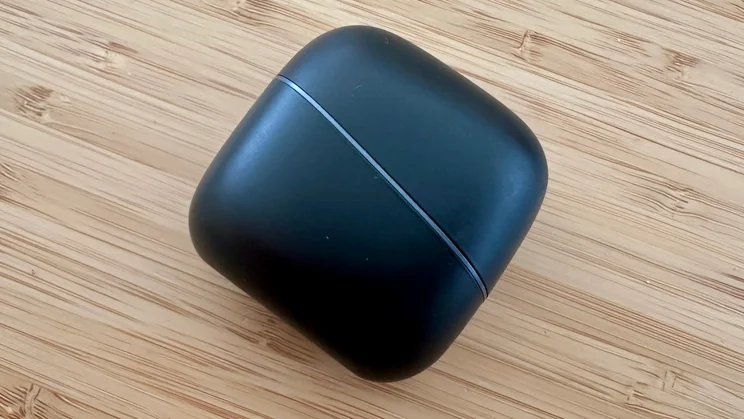
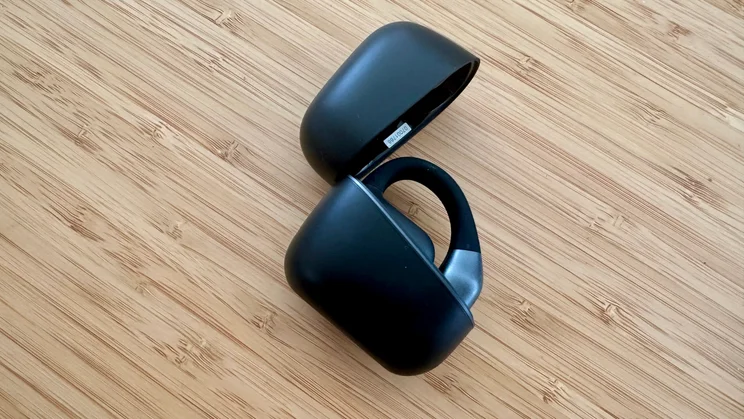
- Comfortable and secure fit
- Good control options
- Open and quite dynamic sound
- Audio presentation is vague
- Lacks low-frequency substance
- Treble can sound edgy and thin
Panasonic’s RB-F10 open-ear true wireless headphones look like notable value for money. After all, they have multipoint connectivity, oversized full-range drivers, good control options and battery life that some more expensive alternatives can only dream of.
They’re light and comfortable, too, and they stay that way for hours on end so they’re no burden to wear, no matter what you’re up to. And when it comes to sound quality, they’re open, fairly dynamic, and can reveal an impressive amount of detail in whatever it is you’re listening to.
Sonically, though, they don’t quite deliver the full story. Low-frequency response is tentative, and at the opposite end of the range they can sound hazy and uncertain. Detail retrieval is good, and the RB-F10 are quite adept where dynamics are concerned, but a general lack of positivity to their sound can manifest itself as a rather vague overall presentation.
Panasonic RB-F10: What do you get for the money?
The RB-F10 may be very modestly priced, but there’s nothing about the way they’re constructed or specified to indicate that Panasonic has indulged in overt penny-pinching. The asking price of £79 buys you a pair of light (8.7g per earbud) and well-made open-ear true wireless earbuds that travel in an equally trim (36g) charging case.









It gets you a design that uses flexible hooks to keep the earbuds secure – they fit rather like a pair of spectacles – and the headphones are equipped with two beam-forming mics per side for telephony and voice-assistant interaction.
The RB-F10 are compatible with Siri and Google Assistant, and Panasonic’s environmental noise cancellation technology is on hand to keep background noise to a minimum during spoken interactions.








Wireless connectivity is via Bluetooth 5.4, and the Panasonic are compatible with the SBC and AAC codecs – they also have multipoint connectivity. Sound is delivered by a pair of 12 x 17mm full-range drive units, but the company is not prepared to divulge the frequency response this arrangement is capable of generating.
Battery life runs to around seven hours from the earbuds, with another 2.5 charges in the case giving an all-in total of roughly 25 hours. A 15-minute pit stop should be good for another hour of playback, while taking the earbuds and the case from flat to full is a 150-minute job. And the earbuds’ IPX4 rating means they’re sweat resistant and should keep the .
What did we like about them?
The RB-F10 are very comfortable indeed. There’s definitely a knack to slipping them into position, but once they’re in place they stay secure indefinitely. It’s not quite the “forgot I was wearing them” sensation Panasonic wants you to believe, but it’s not far off.
Build quality and the standard of finish is very decent. The earbuds and the charging case are almost exclusively made of plastic and the asking price dictates there’s nothing luxurious about any element of the RB-F10, but everything feels properly put together and ready to last for the long haul.








Voice assistant interaction is swift and reliable, call quality at either end of a conversation is great and the touch controls work well, too. Importantly, there’s a pleasant spaciousness to the sound of the RB-F10. The soundstage they’re capable of generating when playing a FLAC file of Lorde’s Shapeshifter is expansive in every direction, and every element of the recording gets sufficient space in which to express itself. Frequency response is fairly even, and there’s a reasonable amount of dynamic impetus to go along with quite impressive detail retrieval.
The Panasonic express rhythms with a fair amount of confidence, and they keep momentum levels high in those recordings that require it. Of course, the open-ear fit means your wider environment is always audible even if you’re listening at considerable volume – and the RB-F10 are capable of getting pretty loud without changing their overall sonic character.
What could be improved?
The RB-F10 are by no means the only open-ear headphones that struggle to generate meaningfully deep low frequencies. But this lack of weight and body is exacerbated by the headphones’ overall tonality. The Panasonic sound thin and rather edgy throughout the frequency range and high frequencies, in particular, are problematic – a combination of hardness and a lack of substance can make them come across as almost phase-y.
For all of the good sonic work the RB-F10 do, their fundamental attitude is rather vague and lacking in positivity. It’s as if the air they allow to circulate freely around your ears has somehow infiltrated the sound they make. The soundstage is big and spacious, yes, but it lacks definition. And while the frequency response is relatively even from top to bottom, that bottom arrives far higher up the frequency range than is ideal.








Should you buy the Panasonic RB-F10?
If you want comfortable open-ear headphones that have the battery stamina to last the distance, well-implemented controls, and a spacious, surprisingly dynamic sound, the Panasonic RB-F10 are well worth investigating. They don’t cost the Earth and they’re nicely made things to boot.
If you’re after a positive, direct and well-defined account of your music, however, you may find these earbuds to be on the rather vague side. Mind you, if it’s low-frequency drive and full-range frequency extension you’re after, there’s every chance you may have to rethink the whole open-ear thing entirely.






